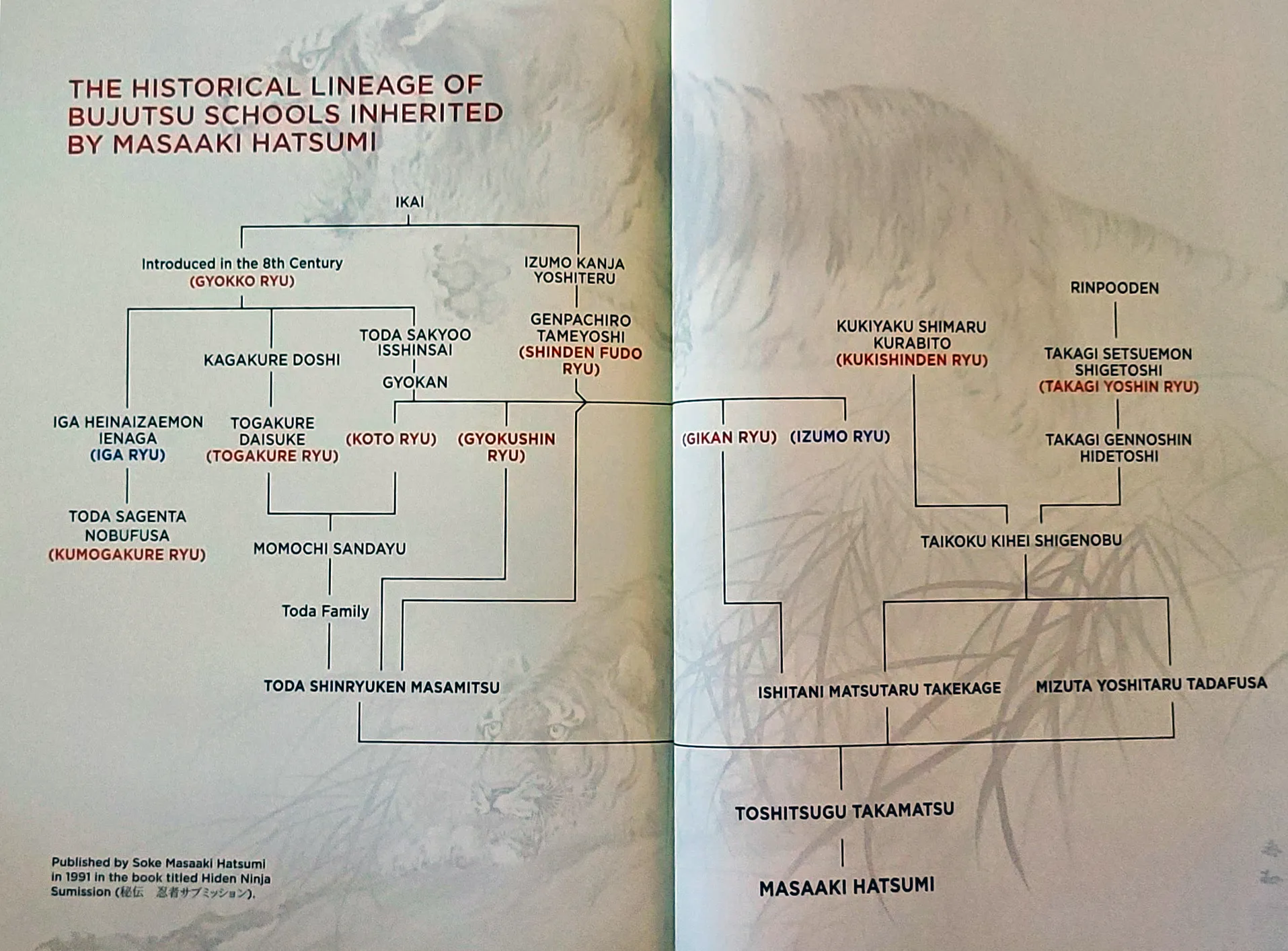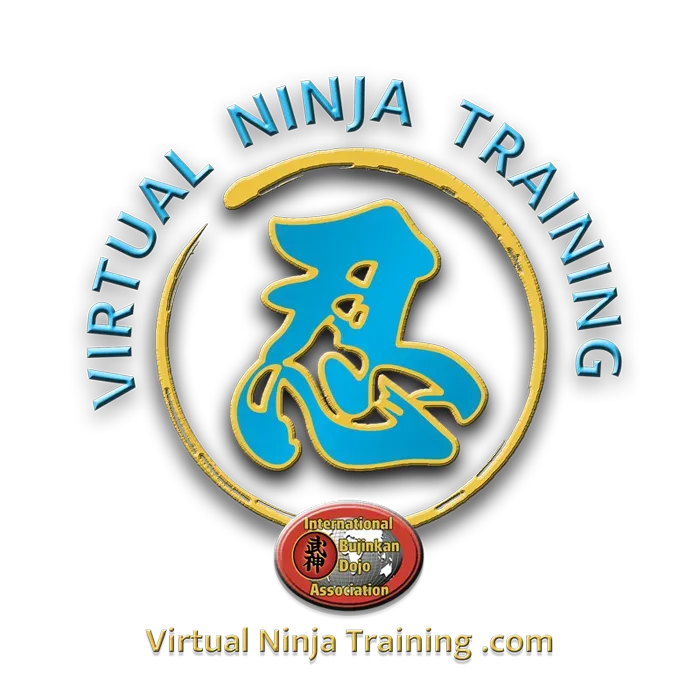Lineage
- Alex Esteve book, Ninpo Gairon -

Ninpo Taijutsu and Budo Taijutsu is what you will learn. Both are the same but Ninpo Taijutsu asks for more. The more can be seen as self-defense versus combat.
When you start to learn the art you will study with Ninpo Taijutsu in mind. Your goal is to get the fundamentals into your body. To cultivate the spirit. When you receive your first black belt (shodan) you will delve deeper into the schools (ryu). If you haven't started the process. Once you have learned a school, scroll, waza (technique) it'll become your job to understand what it has taught you. Even with a teacher it is still upon your shoulders to understand it. With those lessons you can understand what the school is teaching you. To learn the essence of that school. Through that you can create proper henka (change). To me, this is where the Budo becomes Ninpo again. Opening up the growth that Hatsumi, Soke is trying to teach us.
As you can see the majority of our schools came from Gyokko Ryu. The first school we learn is Gyokko Ryu and should be studied fully. By understanding the roots; foundation, you will have created a base that can branch off into the other five schools.
Nothing was wasted in the development. You will see that as you train. Each school assists one another. It is why blending the schools in our taijutsu flows so well. Why it is easy to change and flow from one school to another. Why the art works for every body, no matter the person's age.
Even with two schools that do not touch the Gyokko Ryu lineage they add to the foundation. Creating a more solid base. Kukishinden Ryu and Takagi Yoshin Ryu have connections. Both schools worked together to make themselves better. It may have not started as family ties but sometimes a bonded friendship is greater than blood.
Within all of the soft skills there is hard, and within the hard there is soft. The natural flow of life. All nine schools work together to create solid skills and lessons. This is not about learning waza. This is about learning life and death. Look beyond the words and see the body (human body) in the waza. See the life and creation in that. These are higher lessons, and like all traditional arts they carry a lot of knowledge to learn. Bujinkan is like an onion, so many layers, but sometimes I think it may be closer to the rings in a tree.
Keep going and enjoy the journey.
